Dry-Brined Turkey
This post may contain affiliate links. Read my full disclosure policy.
Discover the secret to a perfectly juicy and flavor-packed bird with this easy dry-brined turkey recipe—it’s a holiday game-changer!
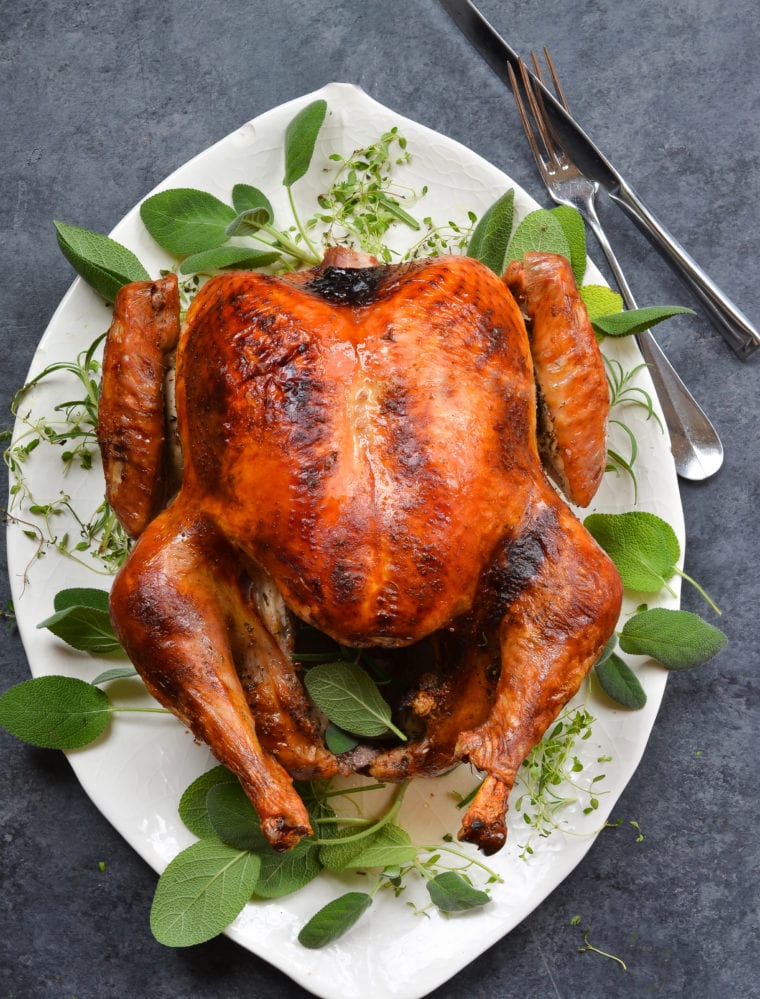
This fantastic dry-brined turkey, adapted from a Jeff Mauro recipe featured in Rachel Ray Magazine, was passed on to me by the talented food stylist Rebecca Jurkevich, who styled my second cookbook. What I particularly love about this recipe is its simplicity. You start by rubbing a mixture of salt and seasonings—the dry brine—onto the turkey’s skin, then let it rest in the fridge overnight. The salt not only thoroughly seasons the meat but also draws out the bird’s natural juices, creating a self-brine that the meat reabsorbs, guaranteeing a turkey that’s flavorful and juicy from the inside out. Plus, the rest in the fridge dries out the exterior of the bird, so when you cook it, you end up with the most beautifully crispy, golden-brown skin. Whether you’re a seasoned cook or a turkey first-timer, this dry-brined turkey recipe is a must-try for its ease and dependable results.
“My husband just declared this is the best turkey we’ve made in 40 years!!!! I concur!!”
What You’ll Need To Make A Dry-Brined Turkey
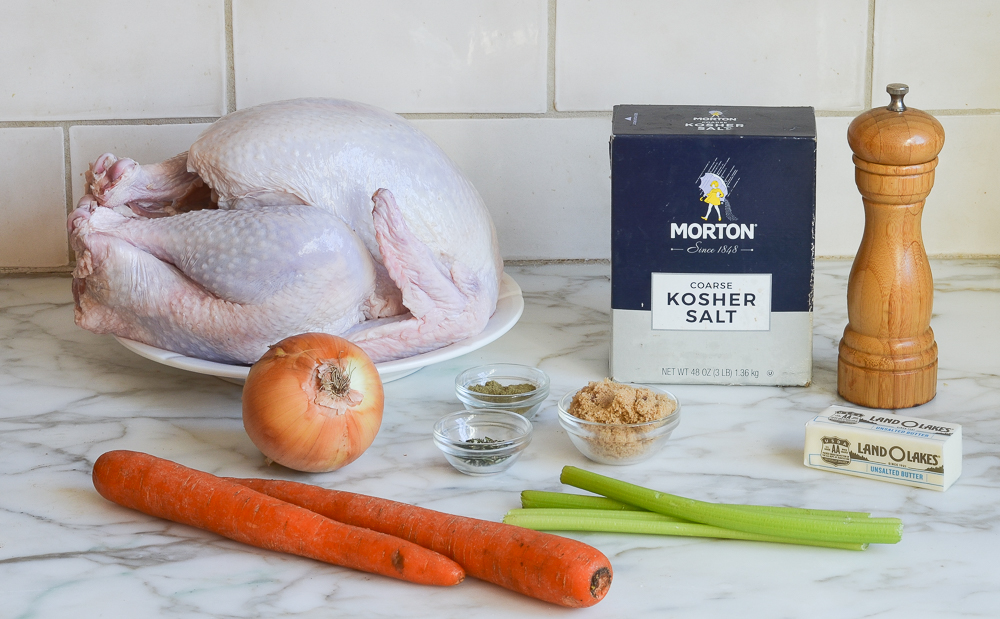
Step-by-Step Instructions
In a small bowl, mix the sugar, salt, thyme, sage, and pepper for the dry brine.
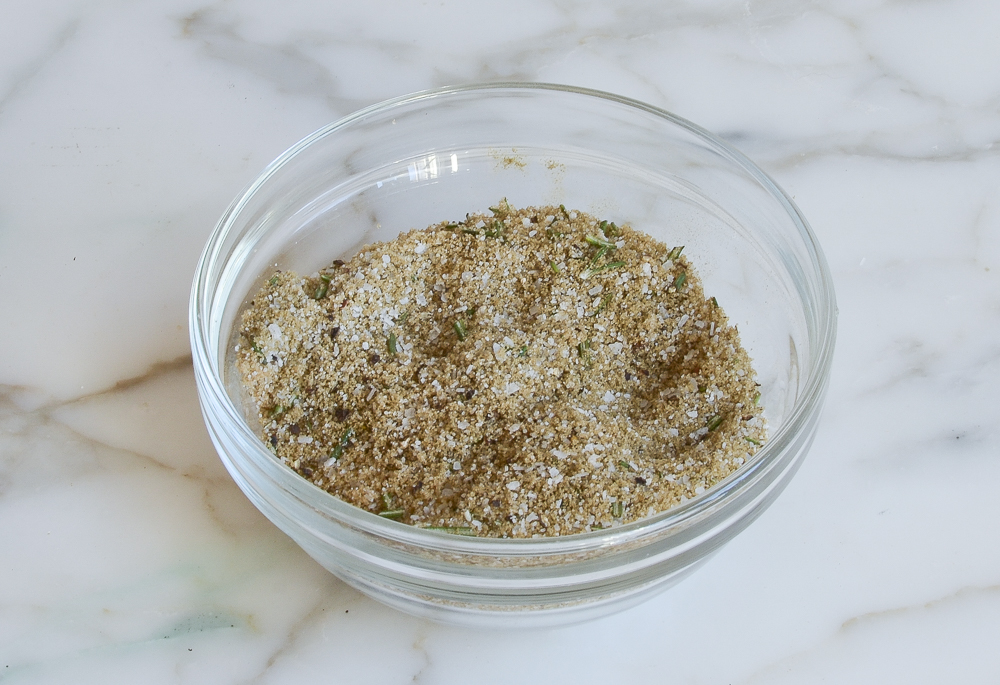
Place the turkey on the rack of a baking sheet. Rub and pat the dry brine all over the turkey, including inside the cavity. Refrigerate, uncovered, for at least 24 hours and up to 48 hours.
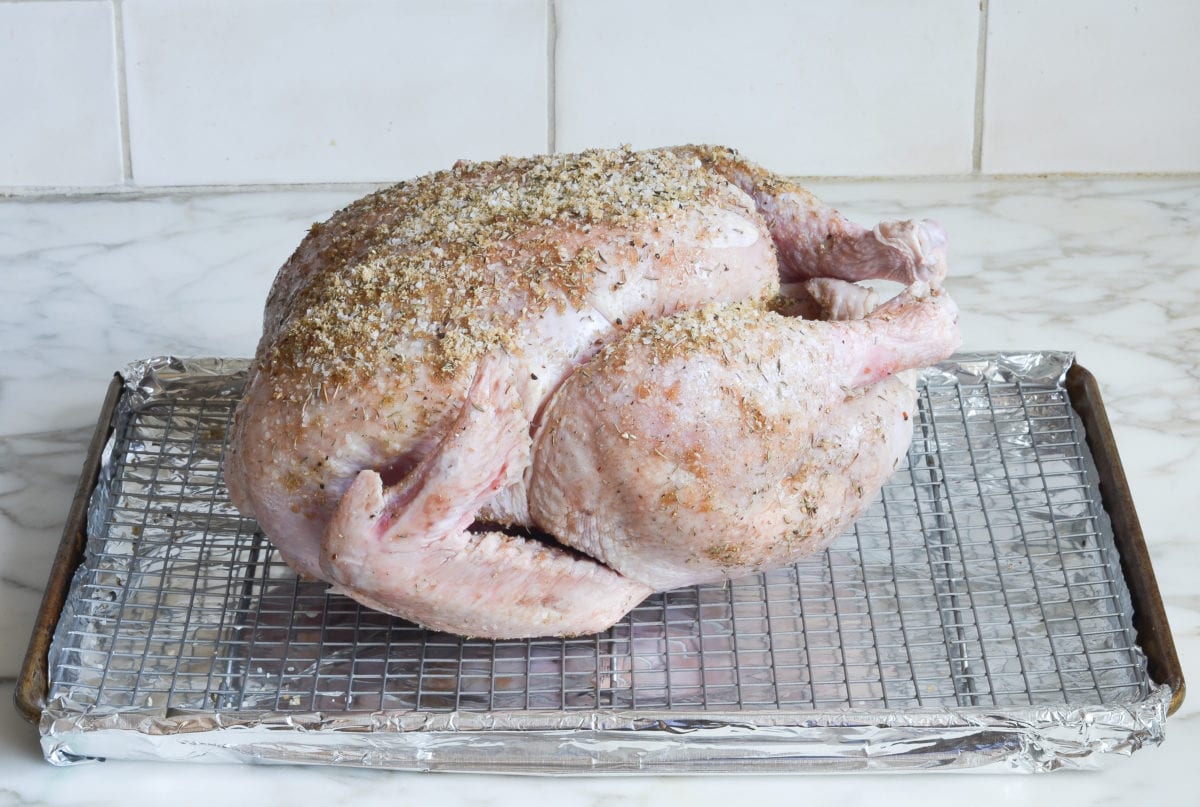
Using damp paper towels, brush the dry brine off the turkey.
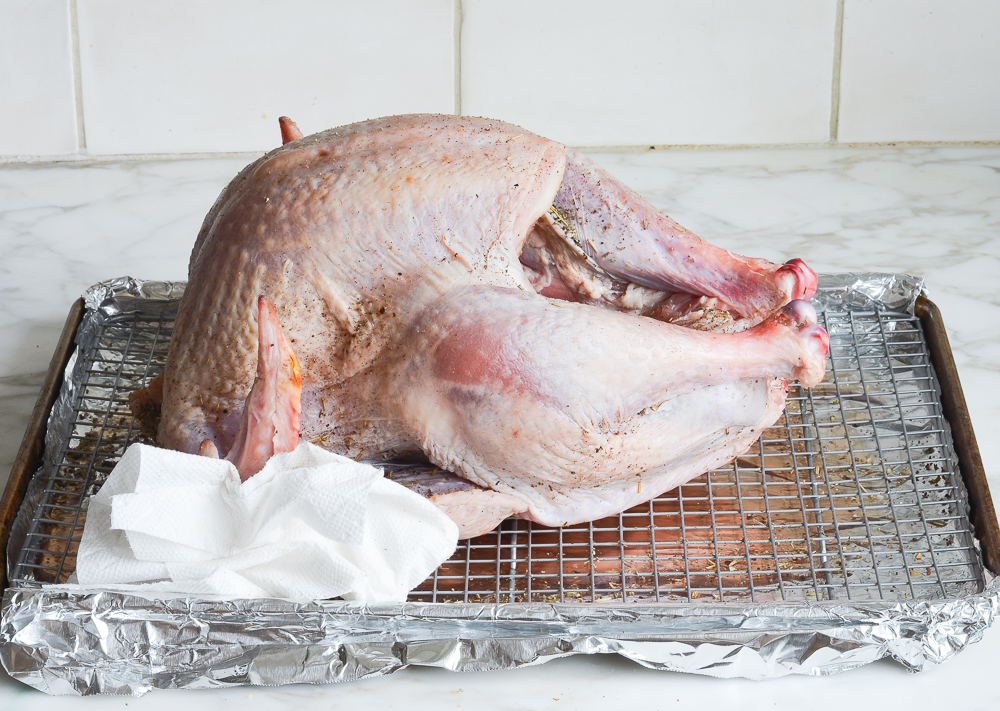
Scatter the onion, carrots, and celery in the bottom of a large roasting pan. Place a roasting rack inside the pan and place the turkey on the rack. Tuck the wings underneath the bird.
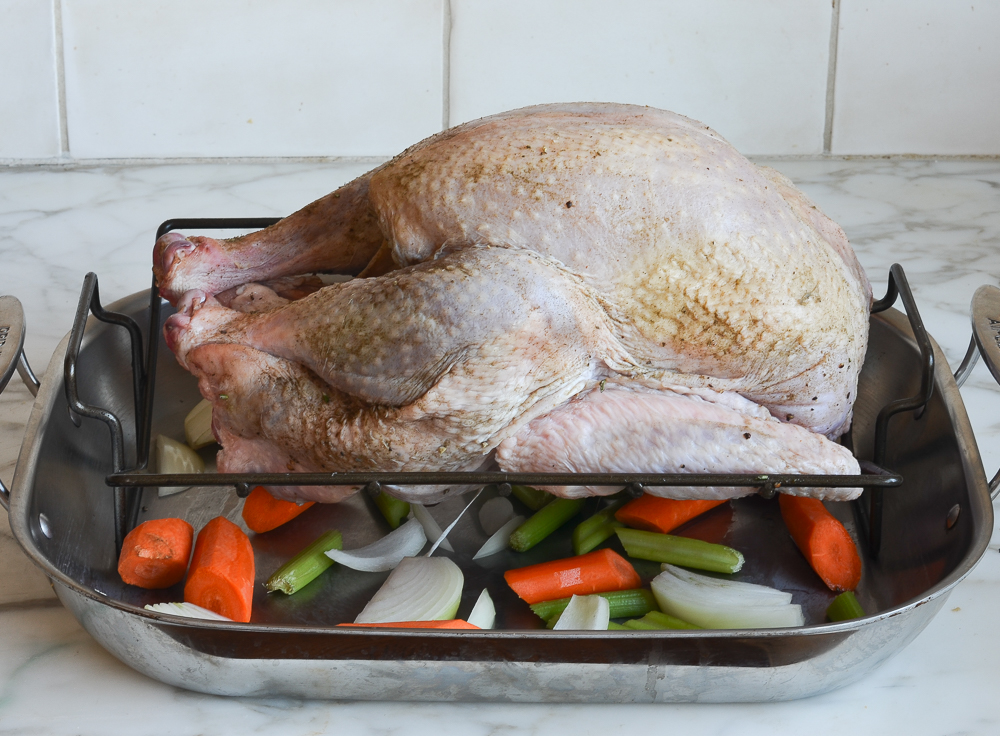
Using your hands, smear the butter all over the turkey.
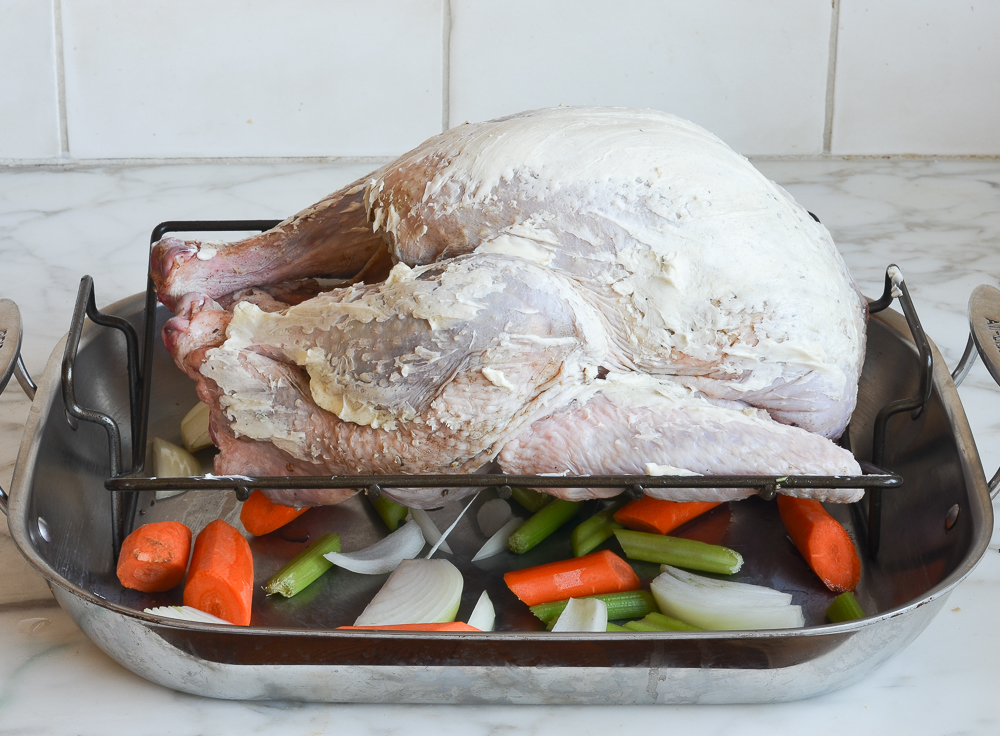
Roast the turkey until the skin is deep golden and an instant-read thermometer registers 165°F when inserted into the thickest part of the breast and the thigh, 1-3/4 to 2-1/2 hours. Check the turkey after 1-1/2 hours. If it’s getting too dark, cover it loosely with foil.
Note: The cooking time will depend on the size of your turkey. For best results, I recommend using a digital thermometer with a leave-in probe and remote monitor, like the one shown below. That way, you can monitor the temperature of the turkey without ever opening your oven.
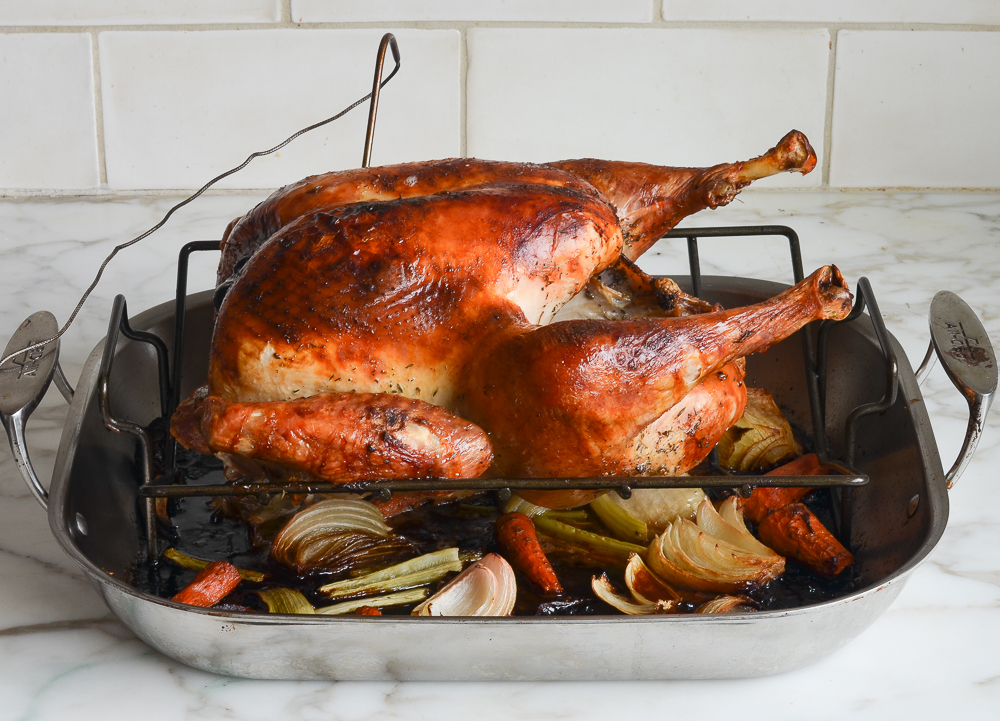
Using clean oven mitts (that you don’t mind getting dirty), carefully tilt the turkey so any juices from the cavity pour into the roasting pan. Transfer the turkey to a platter or cutting board. Tent with foil and let rest for 20 to 30 minutes. Remove the vegetables from the pan and discard (or if they aren’t too soft/brown, save them and arrange on the serving platter with the turkey). Reserve the drippings in the pan for the gravy. While the turkey rests, make the turkey gravy.
Carve the turkey and serve with the gravy on the side.
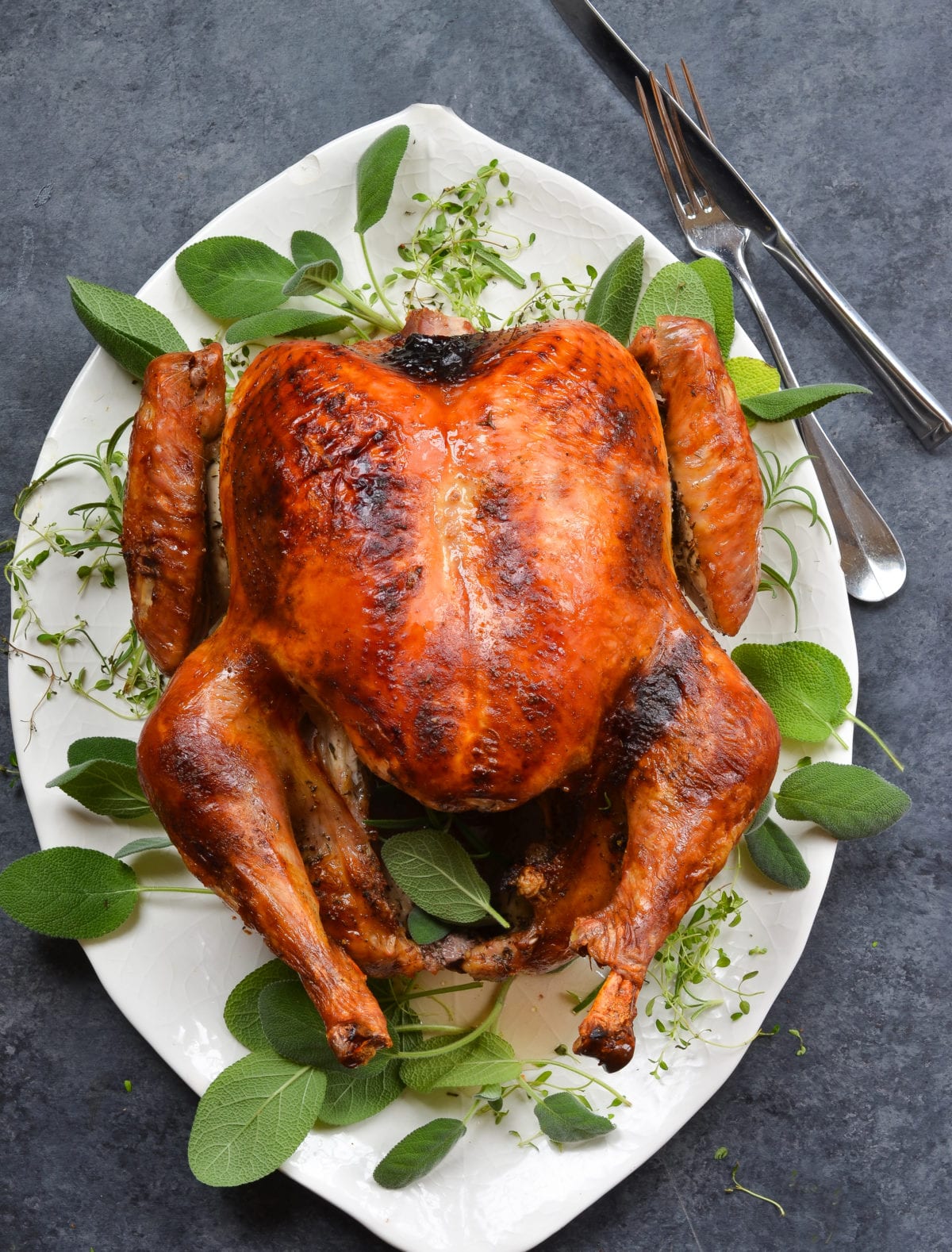
Frequently Asked Questions
A: Dry brining involves rubbing salt, herbs, and spices onto the turkey skin and letting it sit in the fridge overnight (or longer). Wet brining, in contrast, requires soaking the turkey in a seasoned saltwater solution, often necessitating a large cooler or bag and can be quite cumbersome. While both methods enhance flavor and juiciness, dry brining is much simpler and produces crisper skin.
A: The recommended time for dry brining is at least 1 day and up to 3 days. The longer you allow the turkey to brine, the more flavorful and moist it will be. However, even just 24 hours of brining can make a significant difference. You can adjust the salt quantity based on the brining duration to avoid over-salting.
A: If your turkey has been pre-injected with a solution (as is common with many store-bought turkeys), you can still use this dry-brined recipe effectively. These types of turkeys still benefit from additional seasoning for enhanced flavor. However, since they already contain some salt, you should reduce the amount of salt used in the dry brine by half to prevent the turkey from becoming overly salty.
You May Also Like
- 24 Best Thanksgiving Side Dishes
- 18 Thanksgiving Desserts Worth Saving Room For
- Rolled Turkey Breast with Sausage & Herb Stuffing
- Fresh Cranberry Sauce
- Creamy Make-Ahead Mashed Potatoes
- Easy Sausage & Herb Stuffing
Dry-Brined Turkey
Discover the secret to a perfectly juicy and flavor-packed bird with this easy dry-brined turkey recipe—it’s a holiday game-changer!
Ingredients
- 1 (12 to 14-pound) turkey, patted dry (see note)
- ¼ cup (packed) light brown sugar
- 3 tablespoons Morton kosher salt (or ¼ cup Diamond kosher salt)
- 2 teaspoons dried thyme
- 2 teaspoons dried sage leaves or ground sage
- 1 teaspoon freshly ground black pepper
- 6 tablespoons unsalted butter, at room temperature
- 1 large yellow onion, cut into wedges
- 2 carrots, cut into 2-inch pieces
- 2 stalks celery, cut into 2-inch pieces
Instructions
- Line a rimmed baking sheet with aluminum foil for easy clean up, and set an oven rack on top.
- Remove and discard the truss that holds turkey legs together (if the legs are held together with turkey skin, cut the skin to release them). Trim off and discard any excess fat in the neck or body cavity. Remove giblets and neck; discard or save for stock. Rinse the turkey inside and out with warm water. Pat dry with paper towels.
- In a small bowl, mix the sugar, salt, thyme, sage, and pepper for the dry brine. Place the turkey on the rack of the prepared baking sheet. Rub and pat the dry brine all over the turkey, including inside the cavity. Refrigerate, uncovered, for at least 24 hours and up to 48 hours. (For food safety, ensure the turkey remains in the refrigerator at 40°F or lower during the entire brining period. If brining for longer than 24 hours, you can cover the turkey loosely with plastic wrap for the first part of the brining process and then uncover it for the final 24 hours to allow the skin to dry.)
- Preheat the oven to 375°F and set an oven rack in the lower third of the oven. Using damp paper towels, brush the dry brine off the turkey.
- Scatter the onion, carrots, and celery in the bottom of a large roasting pan. Place a roasting rack inside the pan and place the turkey on the rack. Tuck the wings underneath the bird. Using your hands, smear the butter all over the turkey.
- Roast the turkey until the skin is deep golden and a leave-in or instant-read thermometer registers 165°F when inserted into the thickest part of the breast and the thigh, 1¾ to 2½ hours (see note). Check the turkey after 1½ hours. If the skin is getting too browned, cover it loosely with foil.
- Using clean oven mitts (that you don't mind getting dirty), carefully tilt the turkey so any juices from the cavity pour into the roasting pan. Transfer the turkey to a platter or cutting board. Tent with foil and let rest for 20 to 30 minutes. Remove the vegetables from the pan and discard (or if they aren't too soft/brown, save them and arrange on the serving platter with the turkey). Reserve the drippings in the pan for the gravy.
- While the turkey rests, make the gravy.
- Carve the turkey and serve with the gravy on the side.
- Make-Ahead Instructions: If you don't mind losing the crispy skin, the turkey can be roasted and carved ahead of time. Pour a thin layer of the gravy into an ovenproof serving dish. Arrange the carved turkey nicely on top of the gravy; cover tightly with plastic wrap and refrigerate for up to two days. Refrigerate the remaining gravy in a separate container. To reheat: remove the plastic wrap and cover the platter with aluminum foil. Place in a 325°F-oven for 20 to 30 minutes, until the turkey is hot. Reheat the gravy in the microwave or on the stovetop.
- Note on Selecting Your Turkey: For the best results with this dry-brining method, look for a turkey that is not kosher, injected, or labeled as "self-basting." These types of turkeys have already been treated with salt or a brining solution. However, if you can only find a kosher, injected, or self-basting turkey, you can still use this recipe, as these birds do still benefit from additional seasoning. Just halve the amount of salt in the dry brine to avoid over-salting.
- Note: I've given a range for the cooking time, which will depend on the size of your turkey. For best results, I recommend using a digital thermometer with a leave-in probe and remote monitor (like this one). That way, you can monitor the temperature of the turkey without ever opening your oven.
Pair with
Nutrition Information
Powered by ![]()
- Per serving (8 servings)
- Calories: 1,075
- Fat: 47 g
- Saturated fat: 15 g
- Carbohydrates: 6 g
- Sugar: 5 g
- Fiber: 0 g
- Protein: 147 g
- Sodium: 1,619 mg
- Cholesterol: 513 mg
This website is written and produced for informational purposes only. I am not a certified nutritionist and the nutritional data on this site has not been evaluated or approved by a nutritionist or the Food and Drug Administration. Nutritional information is offered as a courtesy and should not be construed as a guarantee. The data is calculated through an online nutritional calculator, Edamam.com. Although I do my best to provide accurate nutritional information, these figures should be considered estimates only. Varying factors such as product types or brands purchased, natural fluctuations in fresh produce, and the way ingredients are processed change the effective nutritional information in any given recipe. Furthermore, different online calculators provide different results depending on their own nutrition fact sources and algorithms. To obtain the most accurate nutritional information in a given recipe, you should calculate the nutritional information with the actual ingredients used in your recipe, using your preferred nutrition calculator.
Gluten-Free Adaptable Note
To the best of my knowledge, all of the ingredients used in this recipe are gluten-free or widely available in gluten-free versions. There is hidden gluten in many foods; if you're following a gluten-free diet or cooking for someone with gluten allergies, always read the labels of your ingredients to verify that they are gluten-free.

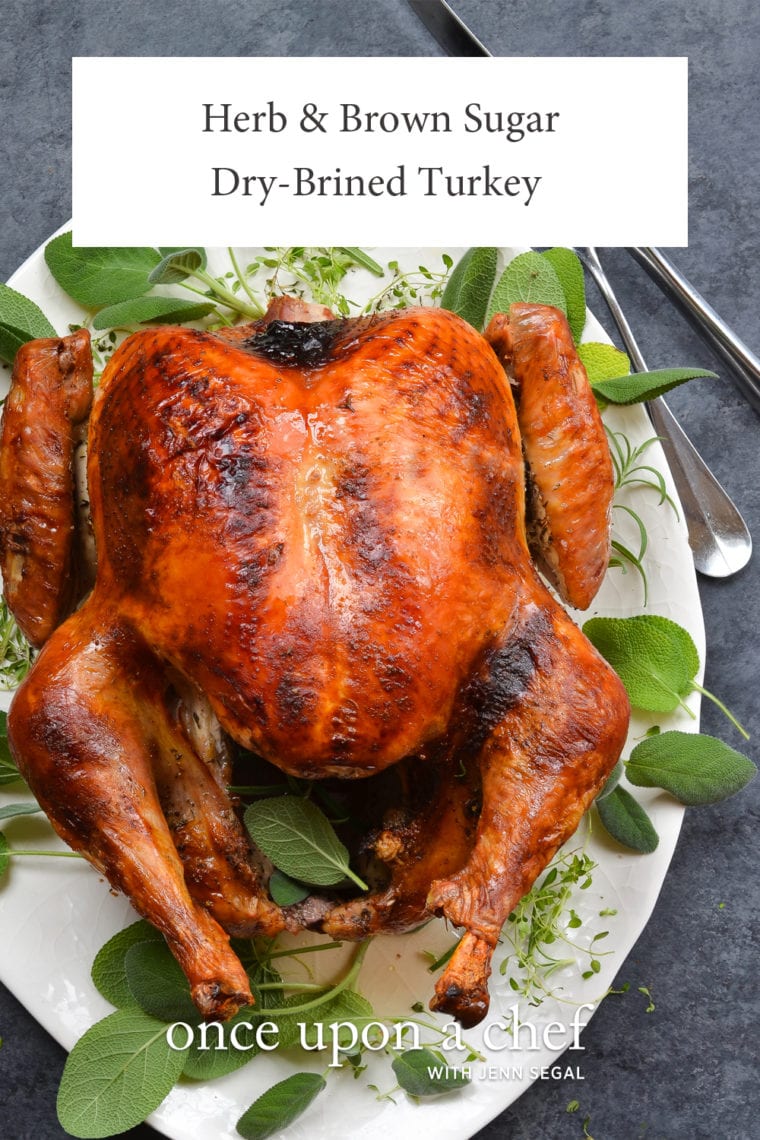
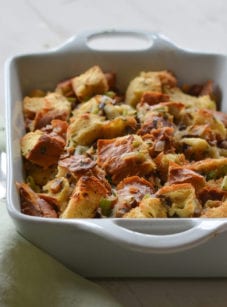
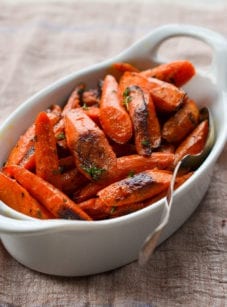
Hi Jenn. I am going to dry this dry brine for Thanksgiving this year. Am I putting any of the brine or butter under the skin or just over the skin and in the cavity? Thank you.
Virginia L.
Hi Virginia, it just goes on the skin and in the cavity. Hope you enjoy the turkey!
Hi Jenn,
Can the dry brine work for the turkey in the oil free propane cooker? Thank you thank you!
Hi Susan, Yes, I would just omit the brown sugar in the dry brine; it may burn in the the cooker (and it will still be delish without it). You obviously wouldn’t use the butter and other ingredients. I would just brush the turkey with vegetable oil before putting in the cooker. I’d love to know how it turns out!
Hi Jen! Looking to make this recipe for Thanksgiving. Question when making the gravy do I still add the herbs? Since the juice from thw turkey has the herbs in it already?
Yes, I would still add the herbs. Hope you enjoy!
Do you recommend chicken stock or wine in the bottom of the roasting pan as it roasts?
Love your recipes and cookbooks!!
So glad you like the recipe and cookbooks! 🙂
No, you really don’t need to add stock or wine to the roasting pan. Hope you enjoy the turkey!
The best turkey we’ve made. Never tried a dry brine before but it was perfect. Thanks for yet another great recipe!
Hi Jenn,
I tried this before and it was great! Would you recommend using fresh herbs – combination of rosemary, thyme and sage (I have a lot to use). If so, what would be the amounts? Thank you so much!
HUGE fan of yours!
Sure, I think using fresh herbs would be fine. I use a total of 2 tablespoons. Hope you enjoy! 🙂
I have eaten turkey every Thanksgiving since the 1950s. Some were cooked by others and some by me. Some were wet brined and some were not brined. This recipe yielded the best turkey I have ever eaten. Somehow that dry brine brought out the flavor in amazing ways. The white meat remained juicy and it carved really well. This will be my turkey recipe from now on.
This recipe is great! I used it on a turkey breast and the meat was delicious and moist for the three days we ate leftovers. Thank you!
I’ve been hosting the family Thanksgiving for the past 10 years. I’ve wet-brined and not-brined. This was the first dry-brined. It was THE BEST turkey I ever had.
I tried this dry brine for the first time on this year’s Thanksgiving turkey and the result was outstanding! The turkey was so moist and even the white meat was juicy. I’ll never roast another turkey without it!
Hi Jenn.
I love your recipes and have been an avid follower for a few years. I’ve also found roast turkey to be a difficult thing to do. It either cooks too fast, takes too long, or is just so “blah”. As a result, I’ve tried a different recipe every year. This year, following your recipe, I think I’ve now found my “go to” recipe to be repeated next year. First, thank you for the advice (via the comments) that the oven temp is dependent on the size of the bird – I think this is one of my errors in past years. Second, I love this dry brine. I was able to brine the bird starting on Tuesday so it got nearly 48 hours in the fridge with the brine. I also filled the cavities with orange and onion wedges, and herbs. Here’s my question. We had a 17.4 lb (fresh) turkey in a 325 degree oven and it was done after 3hr 45 min so about 12 min per lb. I thought it would take closer to the 15 min per lb timing so it was done sooner than I planned and as a result rested (covered in foil) for about 90 minutes. While it was done, it wasn’t “fall off the bone” done and was a bit difficult to carve around the legs. Wondering if altitude makes a difference in the cooking time (or method). Also wondering what could I do to get “fall off the bone” done without being over cooked. Does resting time impact this? In the end, it was very tasty and I received lots of compliments. So, I’m capturing notes for next year. Thank you!
Hi Nicole, so glad you like the recipes/blog! Yes, turkey can be a difficult thing to master but glad you enjoyed this one. Regarding your questions about timing, 12 minutes per pound is on the low end of normal but still within the normal range. And the only way to get the dark meat to fall off the bone is to take the turkey out of the oven when the breast meat hits the correct temperature, carve the white meat off, and put the dark meat back in the oven for a bit longer. Hope that helps!
Hi Jenn. Is it possible to leave out or substitute the brown sugar in the dry brine? I have family members on a sugar restricted diet. Thank you
Sure, Norma, that should be fine.